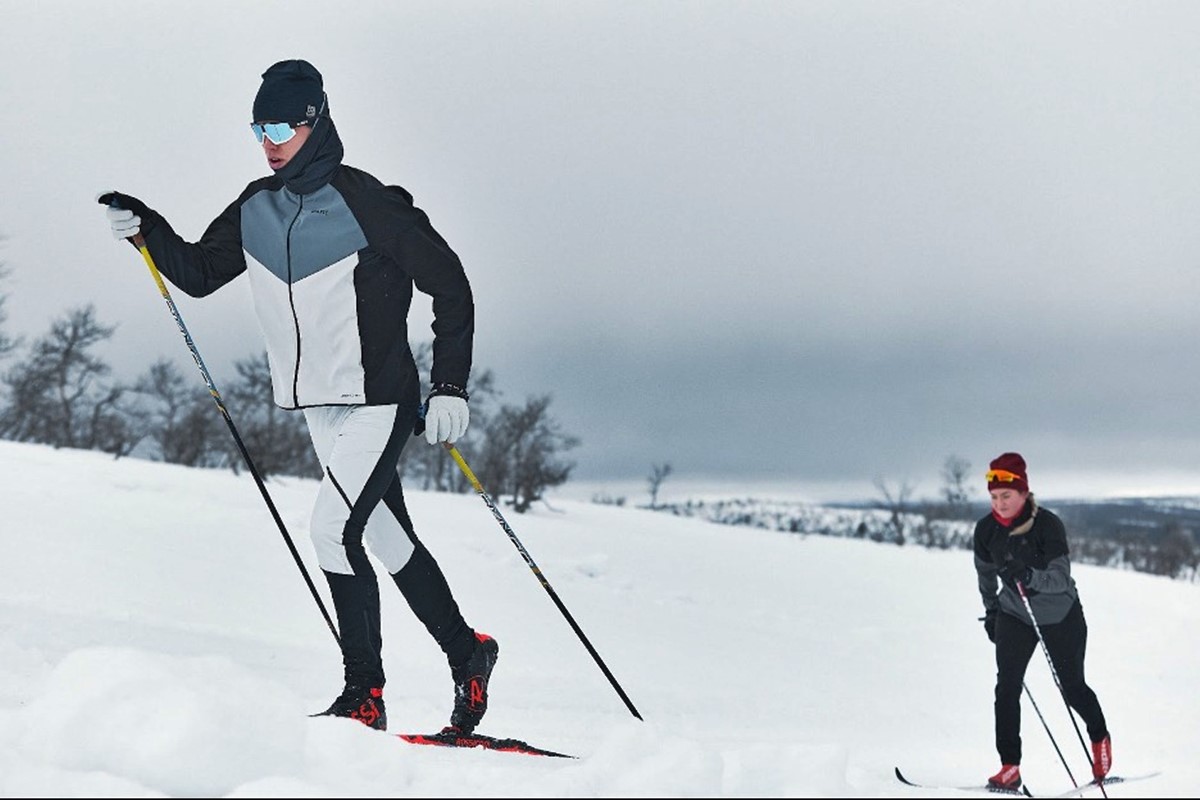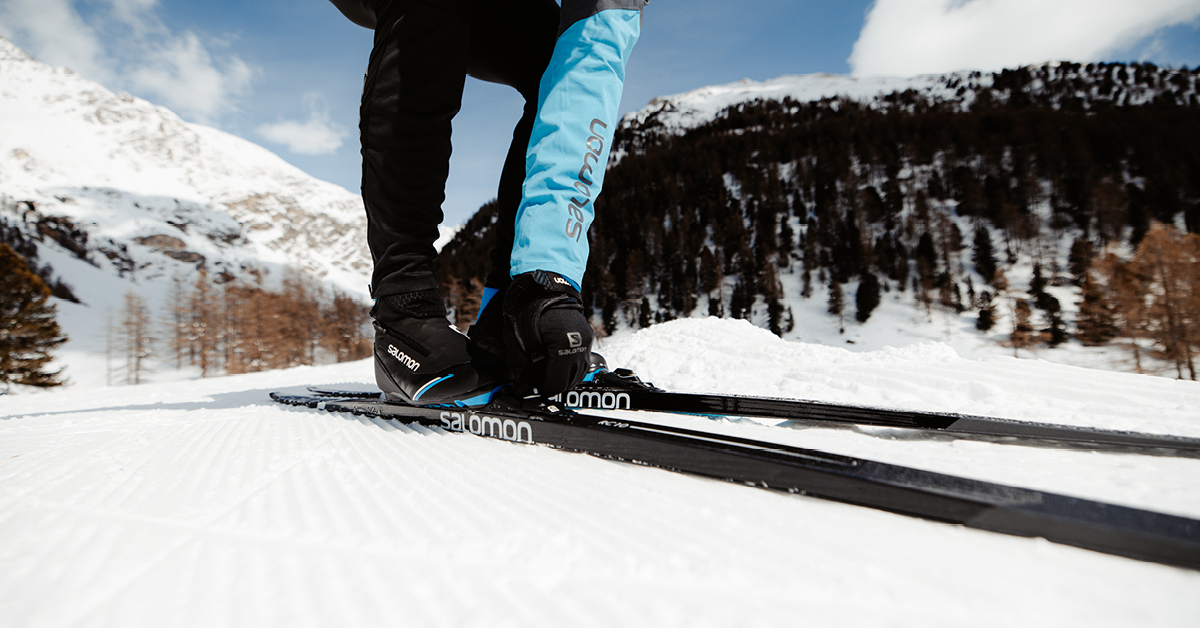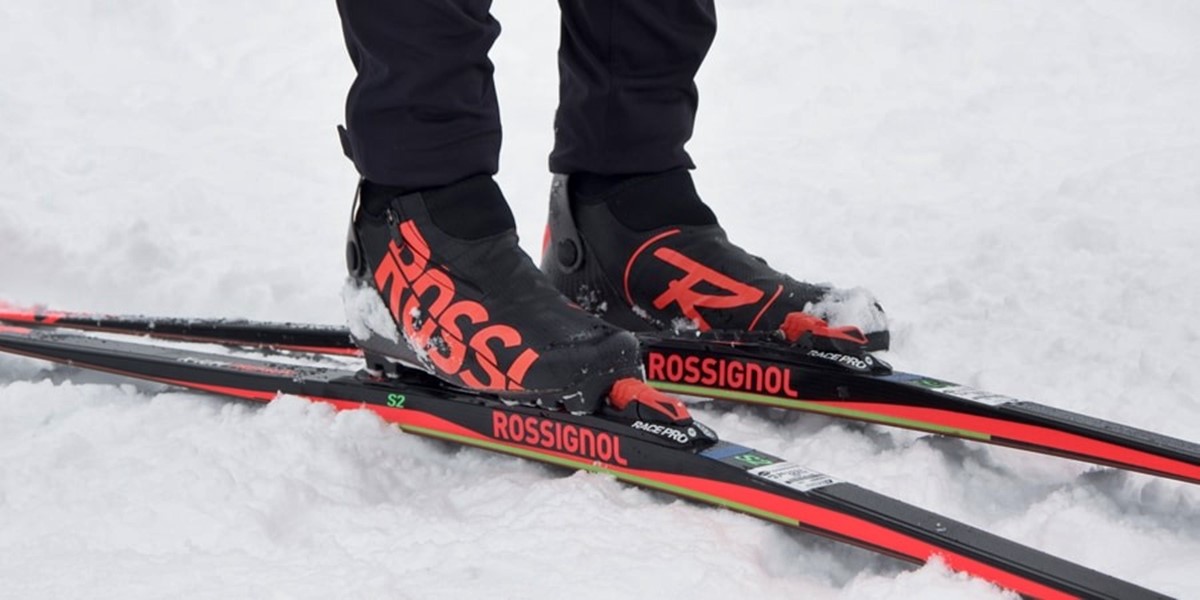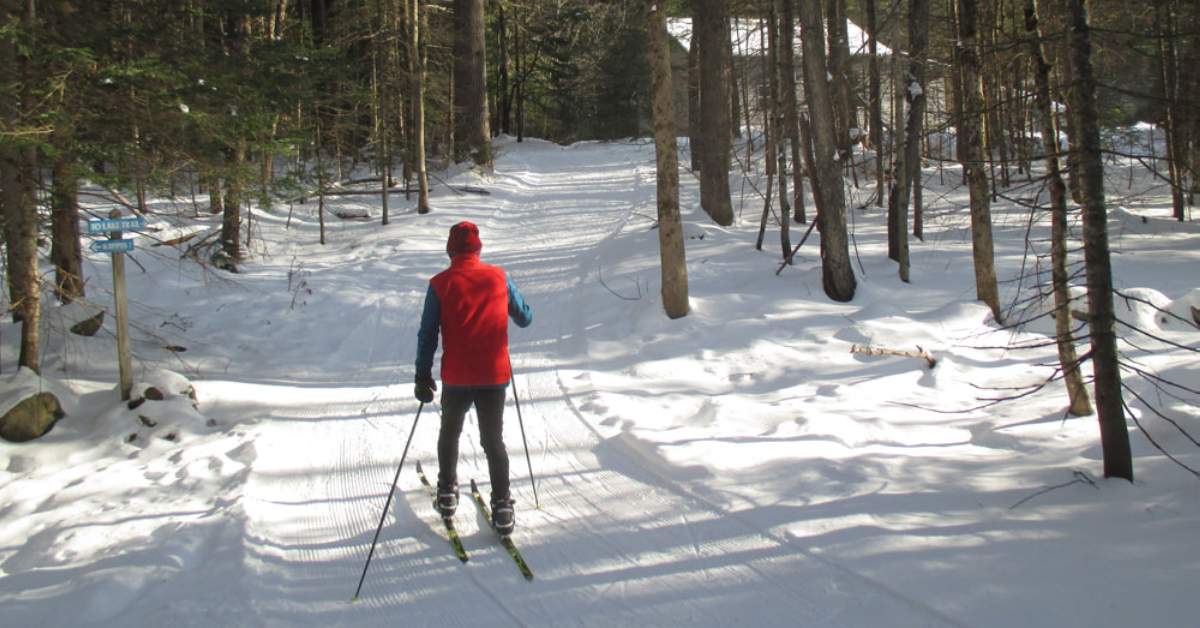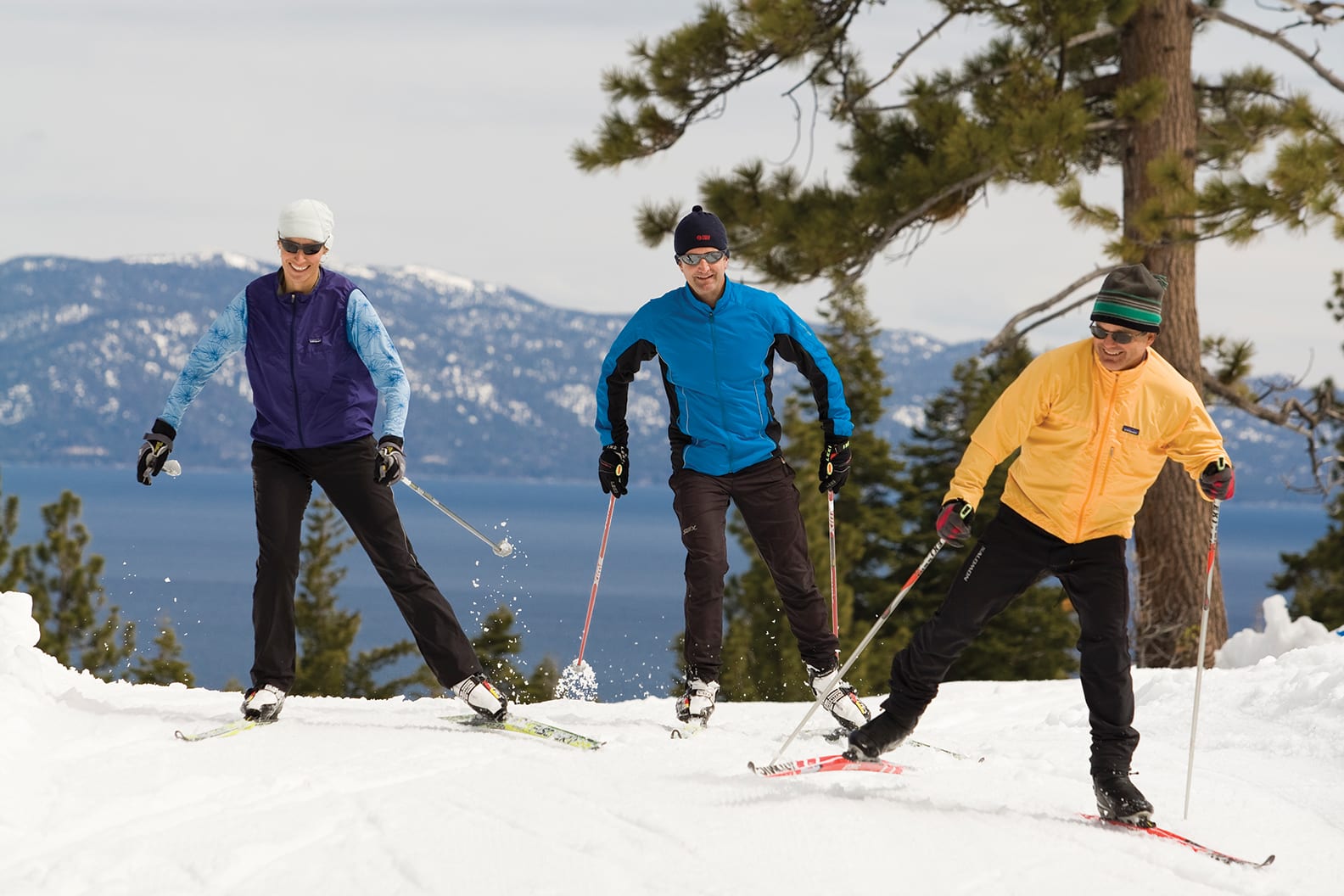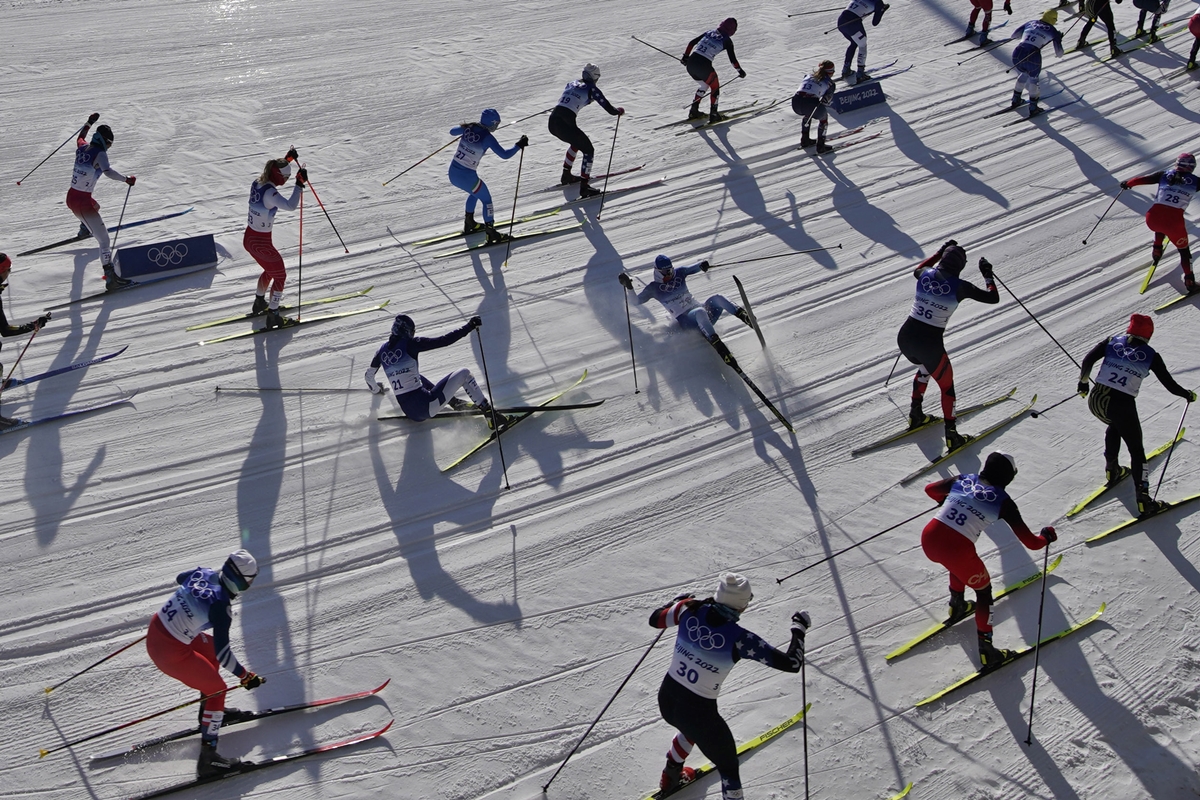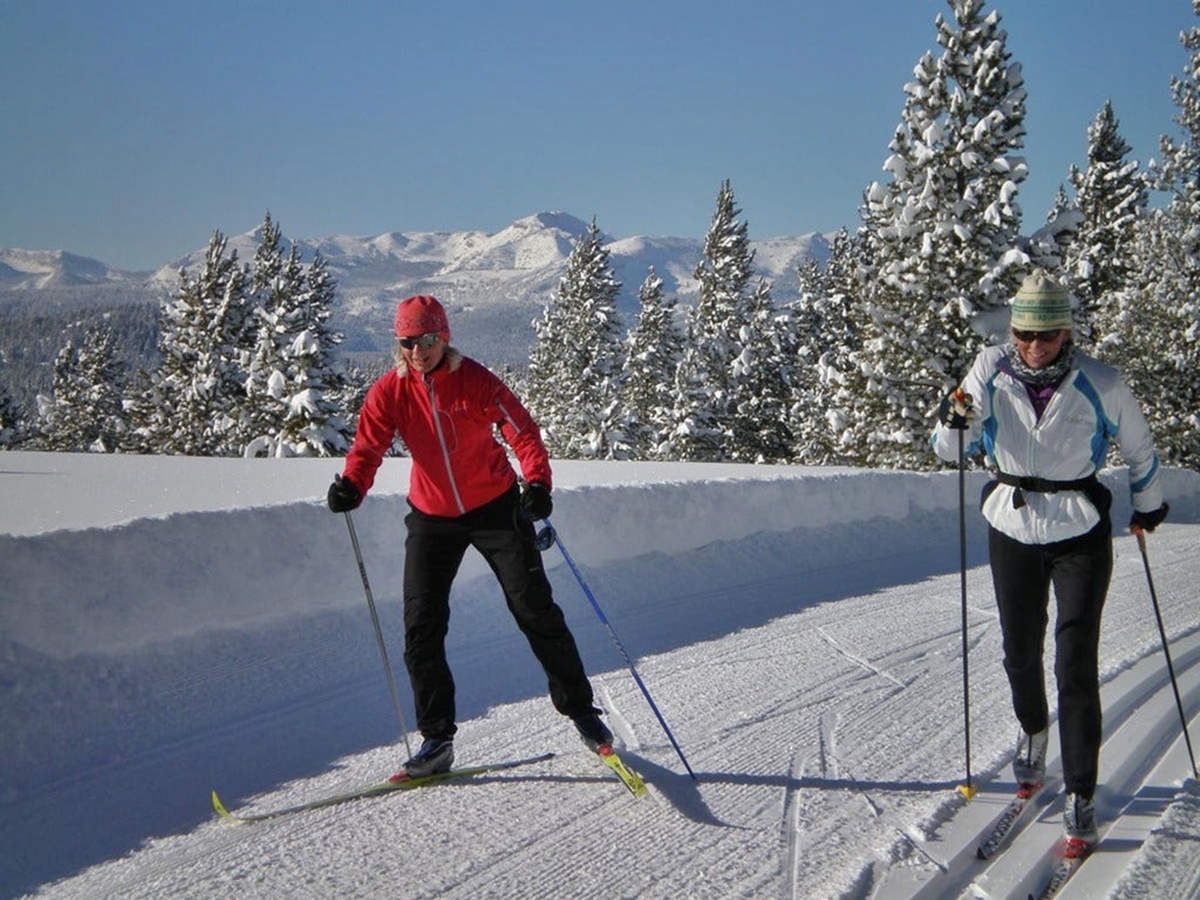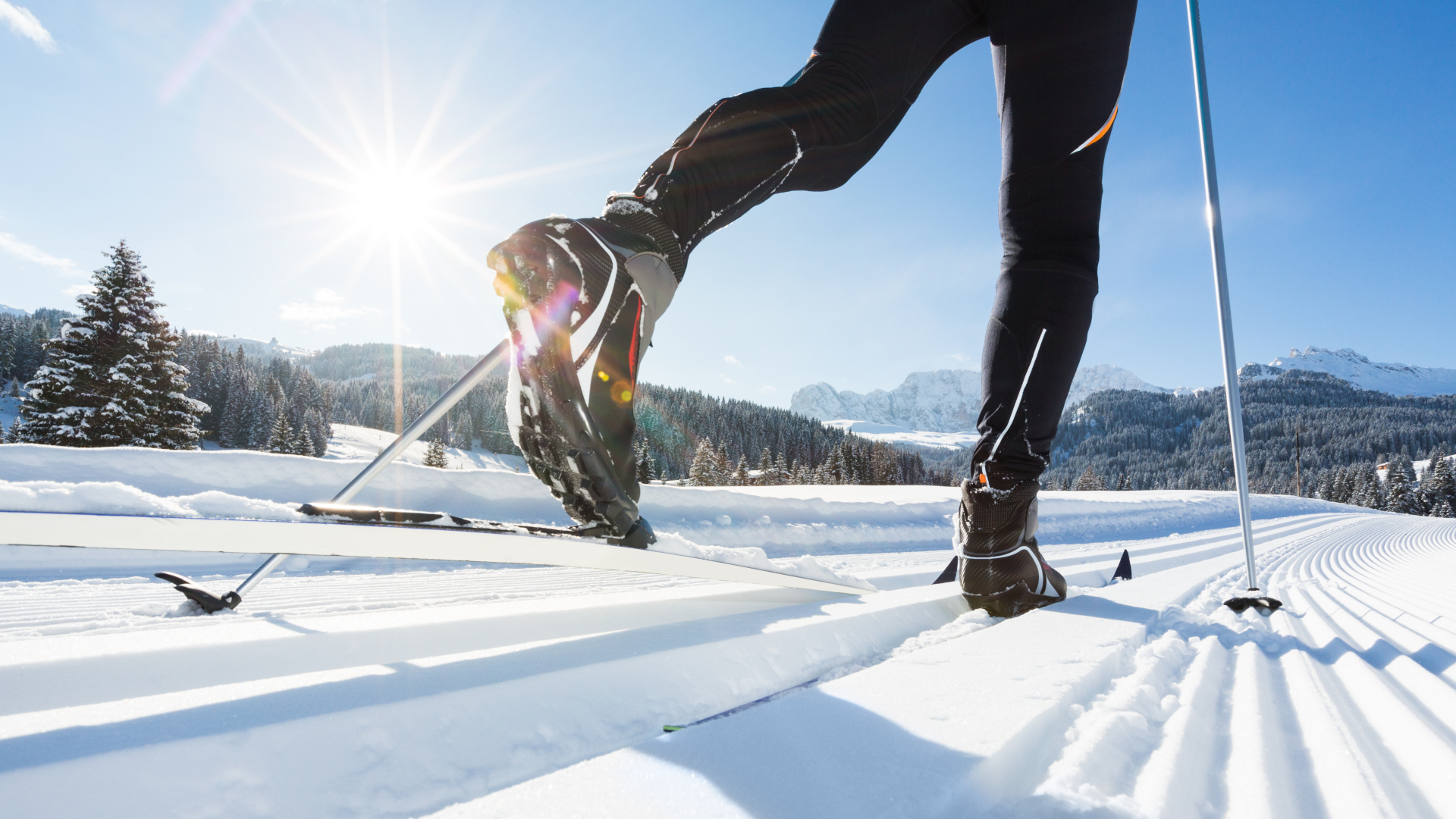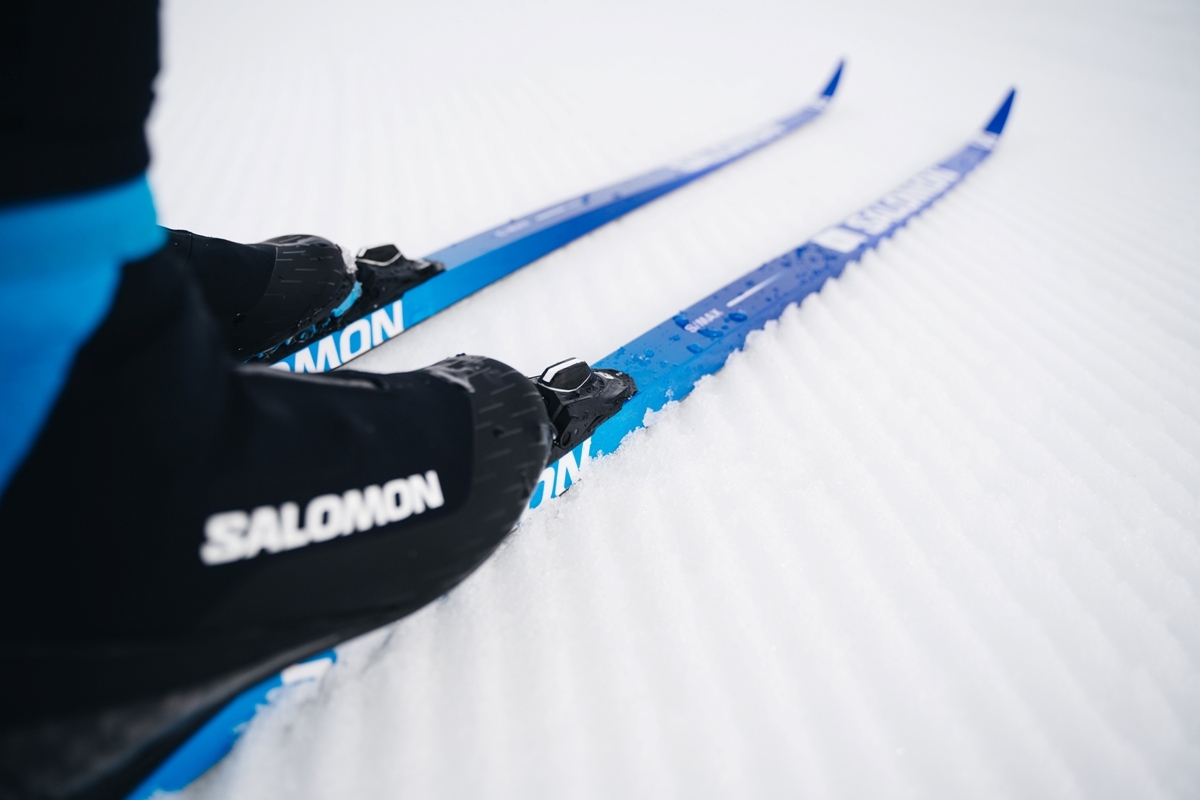Home>Misc>Featured>What Do You Need For Cross Country Skiing
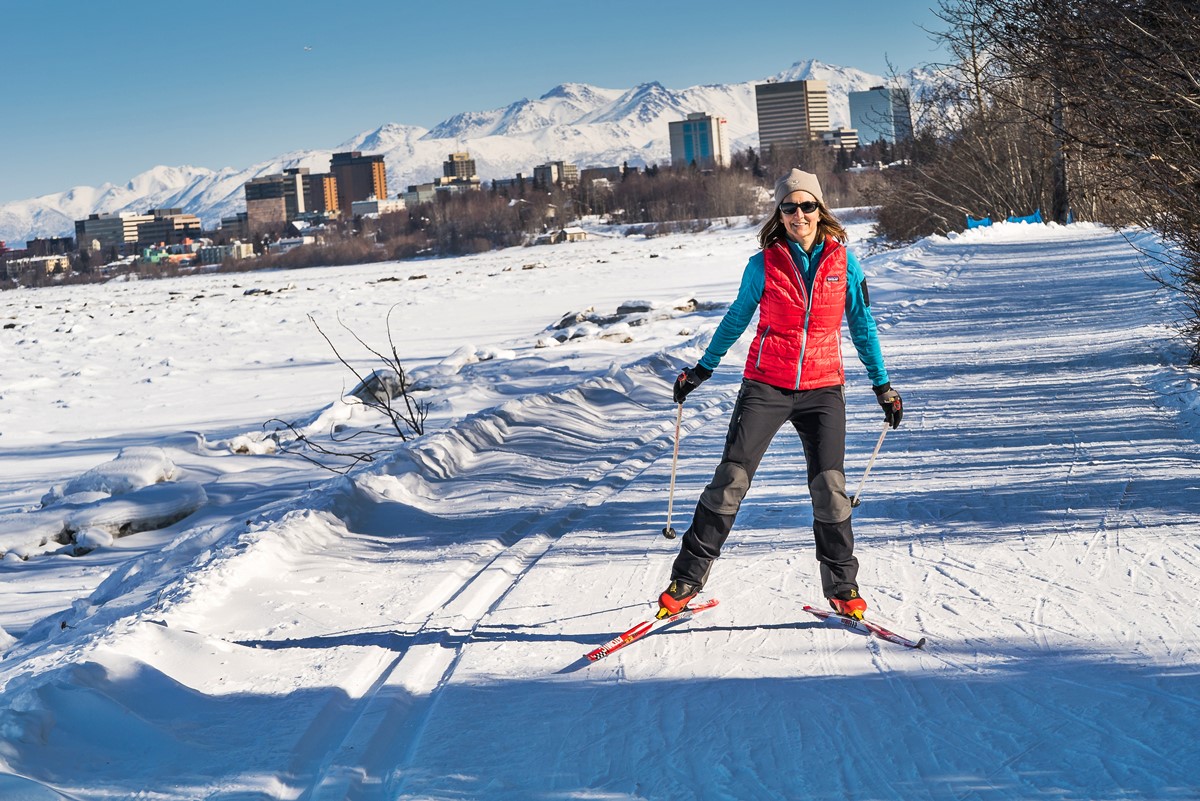

Featured
What Do You Need For Cross Country Skiing
Modified: August 22, 2023
Discover the essential gear and equipment you need for cross country skiing. Get featured products and expert advice to enhance your skiing experience.
Introduction
Cross country skiing is a popular winter sport that combines the exhilaration of gliding over snow-covered landscapes with a fantastic cardiovascular workout. Whether you’re a beginner or an experienced enthusiast, having the right equipment is essential for a successful and enjoyable experience on the trails. In this article, we will explore the essential equipment needed for cross country skiing, including clothing and layering, skis and bindings, poles, boots and footwear, waxing and maintenance, safety gear, as well as optional equipment and accessories.
When venturing out into the wintery wilderness, it’s important to be properly dressed to stay warm and comfortable. Layering is key, as it allows you to regulate your body temperature as you exert yourself. Start with a moisture-wicking base layer, followed by an insulating mid-layer, and finish with a windproof and waterproof outer layer. Don’t forget to wear thermal socks, a hat or helmet, and gloves or mittens to protect your extremities from the cold.
Next on the list is a good pair of skis and bindings. Cross country skis are designed for efficient gliding over flat or undulating terrain. They are typically longer and narrower than downhill skis, with a specialized pattern on the base that provides grip when you’re climbing uphill. The bindings should be compatible with your boots and allow for easy movement and control.
Poles are another essential piece of equipment in cross country skiing. They help with balance, propulsion, and stability. Choose poles that are the right length for your height and skiing style. Generally, the poles should reach up to your armpits when you’re standing on flat ground with the ski tips touching the ground.
Boots and footwear are crucial for comfort and control. Cross country ski boots are lightweight and flexible, allowing for freedom of movement while providing support to your feet and ankles. They should fit snugly but not too tight, to avoid discomfort and blisters. It’s important to try on different pairs to find the right fit.
Proper waxing and maintenance of your skis is necessary to ensure optimal performance and longevity. Waxing helps reduce friction between the skis and the snow, improving glide and control. Depending on the snow conditions, you will need to apply different types of wax. Regular maintenance includes cleaning the skis, checking for damage, and performing necessary repairs.
Safety should always be a top priority when engaging in any outdoor activity. Consider wearing a helmet, especially when skiing at higher speeds or on more challenging terrain. It’s also a good idea to carry a first aid kit, a map, and a compass or GPS device. Familiarize yourself with the trails and be aware of any potential hazards.
Lastly, there are optional equipment and accessories that can enhance your cross country skiing experience. These include items like a hydration pack, a backpack for carrying extra gear, sunglasses or goggles to protect your eyes, and hand warmers for chilly days. Choose the accessories that suit your needs and preferences.
By ensuring you have the right equipment, you can fully immerse yourself in the joy of cross country skiing. Remember to always check the weather conditions and trail reports before heading out, and have a great time exploring the winter wonderland on your skis!
Essential Equipment for Cross Country Skiing
Cross country skiing is a sport that requires specific equipment to ensure a safe and enjoyable experience on the trails. In this section, we will explore the essential equipment needed for cross country skiing.
Clothing and layering are crucial when it comes to staying warm and comfortable in the cold winter weather. Start with a moisture-wicking base layer to keep sweat away from your skin. Add an insulating mid-layer to provide warmth, and finish with a windproof and waterproof outer layer to protect against the elements. Don’t forget to wear thermal socks, a hat, and gloves or mittens to keep your extremities warm.
Skis and bindings are the primary equipment for cross country skiing. Cross country skis are longer and narrower than downhill skis, designed for efficient gliding over flat or undulating terrain. They have a specialized pattern on their base to provide grip when climbing uphill. Be sure to choose skis that suit your weight and skiing style. The bindings should be compatible with your boots and allow for easy movement and control.
Poles are essential for balance, propulsion, and stability in cross country skiing. When choosing poles, consider their length. Generally, the poles should reach up to your armpits when you’re standing on flat ground with the ski tips touching the ground. Look for poles made from lightweight materials for optimal performance.
Boots and footwear are crucial for comfort and control in cross country skiing. Cross country ski boots are lightweight and flexible, allowing for freedom of movement while providing support to your feet and ankles. It’s important to try on different pairs to find the right fit. Make sure your boots are compatible with the bindings on your skis.
Waxing and maintenance of your skis are necessary to ensure optimal performance. Waxing reduces friction between the skis and the snow, improving glide and control. Different types of wax are used depending on the snow conditions. Regular maintenance includes cleaning the skis, checking for damage, and performing necessary repairs. It is recommended to learn proper waxing and maintenance techniques or seek professional assistance.
Safety gear is essential for any outdoor activity. Consider wearing a helmet, especially when skiing at higher speeds or on more challenging terrain. This will help protect your head in the event of a fall or collision. Additionally, it’s a good practice to carry a first aid kit, a map of the trails, and a compass or GPS device. Familiarize yourself with the trails and be prepared for any emergencies.
Lastly, there are optional equipment and accessories that can enhance your cross country skiing experience. Hydration packs are convenient for carrying water or energy drinks. A backpack is useful for carrying extra gear such as snacks, spare clothing, or a camera. Sunglasses or goggles protect your eyes from sun glare and wind. Hand warmers can provide extra comfort on particularly cold days.
Having the right equipment is essential for a safe and enjoyable cross country skiing experience. Take the time to choose gear that suits your needs and preferences. By ensuring you have the right clothing, skis, poles, boots, and safety gear, you can fully immerse yourself in the beauty of the winter landscape while enjoying the invigorating exercise of cross country skiing.
Clothing and Layering
When it comes to cross country skiing, proper clothing and layering are essential for staying warm and comfortable in the cold winter weather. The key is to dress in layers that can be easily added or removed depending on your activity level and the outside temperature.
Start with a moisture-wicking base layer that is snug-fitting and designed to pull sweat away from your skin. This will help keep you dry and prevent chills when you start to cool down. Look for base layer materials like merino wool or synthetic blends that are quick-drying and odor-resistant.
Next, add an insulating mid-layer for warmth. This can be a fleece or down jacket, or even a wool sweater. The mid-layer should be breathable and provide enough insulation to trap heat, but not be too bulky. It’s important to choose a mid-layer that allows for freedom of movement and doesn’t restrict your arms or torso.
Lastly, finish off with a windproof and waterproof outer layer. This jacket and pants should protect you from the elements, including wind, snow, and moisture. Look for outer layers with features like sealed seams, adjustable cuffs and hems, and ventilation options to help regulate your body temperature. It’s important to choose outer clothing that is both breathable and durable.
Don’t forget about your extremities. Wear thermal socks made from moisture-wicking materials, as they will keep your feet dry and warm. For your head, wear a hat or a helmet to insulate against heat loss. You can also use a neck gaiter or scarf to protect your neck and face from cold winds. Lastly, choose gloves or mittens that are warm, waterproof, and allow for a good grip on your poles.
Remember, the key to effective layering is being able to adjust your clothing as needed. As you start skiing and your body warms up, you may need to remove a layer or unzip your outer jacket to regulate your body temperature. This is especially important during high-intensity activity or when the weather conditions change.
Overall, choosing the right clothing and layering is crucial for a comfortable and enjoyable cross country skiing experience. It’s important to invest in quality garments that are designed specifically for outdoor winter activities and provide the necessary insulation, breathability, and protection from the elements. By dressing appropriately and layering effectively, you will be able to focus on the beauty of the scenery and fully enjoy your time on the trails.
Skis and Bindings
Choosing the right skis and bindings is crucial for a successful cross country skiing experience. Cross country skis are specifically designed for gliding over flat or undulating terrain and come in a variety of styles to suit different skiing techniques and conditions.
When selecting skis, consider your weight, skiing ability, and the type of terrain you’ll be skiing on. Skis are categorized by their length, camber, and width. Longer skis provide better glide on flat terrain, while shorter skis offer more maneuverability. Camber refers to the slight arch in the middle of the ski, which helps with grip and maneuverability. Wider skis provide better stability in soft or deep snow.
The base of the ski is also an important consideration. Traditional cross country skis have a patterned or “fish scale” base, which provides grip when climbing uphill. These skis are suitable for most recreational skiers. However, if you’re more advanced or plan to ski in a variety of conditions, consider getting skis with a waxable base. Waxable skis require regular waxing, but they offer better performance and glide in different snow conditions.
Bindings are what attach your boots to the skis. There are a few different types of bindings available, but the most common are the NNN (New Nordic Norm) and SNS (Salomon Nordic System) bindings. When choosing bindings, ensure they are compatible with your boots. It’s also important to consider the level of control and stability you prefer, as different bindings offer varying degrees of lateral support.
Be sure to consult with a knowledgeable salesperson or experienced skier when choosing skis and bindings. They can help determine the best fit for your skill level, skiing style, and intended use. Trying on different skis and boots and experimenting with different bindings will also help you find the most comfortable and suitable combination.
Once you’ve chosen your skis and bindings, it’s important to maintain them properly. Store your skis in a cool, dry place, away from direct sunlight. Clean the bases after each use to remove dirt and wax residue. Regularly check for any damage, such as cracks or delamination, and have them repaired if necessary.
By investing in the right skis and bindings and taking care of them properly, you’ll have a solid foundation for an enjoyable cross country skiing experience. With the appropriate equipment, you’ll be gliding smoothly and effortlessly through the winter wonderland.
Poles
Poles are an essential piece of equipment for cross country skiing, providing balance, propulsion, and stability as you glide along the trails. Choosing the right poles can greatly enhance your skiing experience.
When selecting poles, consider their length. The appropriate length depends on your height and skiing style. A general rule of thumb is that the poles should reach up to your armpits when you’re standing on flat ground with the ski tips touching the ground. This length allows for a comfortable and efficient pole plant and gives you the necessary leverage for pushing off and propelling yourself forward.
Pole material is another important consideration. Most poles are made from lightweight aluminum or carbon fiber. Aluminum poles are more durable and less expensive, making them a good choice for beginners or recreational skiers. Carbon fiber poles are lighter and more expensive, providing a more efficient swing and better vibration damping. They are popular among experienced skiers and racers.
Another feature to consider is the pole grip. There are different types of grips available, including cork, foam, and rubber. Cork grips are lightweight, comfortable, and provide good insulation. Foam grips are softer and offer excellent shock absorption. Rubber grips are durable and provide a secure grip, especially in wet or cold conditions.
Some poles also feature adjustable lengths, allowing you to adapt to different terrain and skiing techniques. Adjustable poles are particularly useful for skiers who switch between trail skiing and steeper uphill or downhill sections.
When using poles, it’s important to maintain the correct technique. The pole plant should be made slightly forward of your feet, planting the pole into the snow at an angle and pushing off with your arm and shoulder. This motion helps with balance and propelling yourself forward. Practice your pole technique to ensure efficiency and smooth transitions as you ski.
Lastly, take care of your poles by properly storing them and keeping them clean. Store them in a cool, dry place and avoid placing heavy items on top of them. Clean the poles after each use to remove any dirt or snow. Regularly inspect the baskets and tips and replace them if they show signs of wear or damage.
By choosing the appropriate poles and using them correctly, you’ll have the necessary support and stability for a fantastic cross country skiing adventure. Enjoy the rhythm of your pole plants as you explore the winter landscape and feel the exhilaration of gliding on snow.
Boots and Footwear
When it comes to cross country skiing, having the right boots and footwear is crucial for comfort, control, and performance. Cross country ski boots are specifically designed to provide flexibility, support, and insulation while allowing for freedom of movement.
When choosing boots, it’s important to consider factors such as fit, support, and compatibility with the bindings on your skis. Opt for boots that fit snugly but not too tight. They should provide a good ankle and arch support to enhance your balance and stability on the skis. Additionally, the boots should be compatible with the type of bindings your skis have.
Trial and error is essential when finding the right boot fit. Visit a reputable ski shop and try on different boots, ideally with the socks you plan to wear while skiing. Walk around and simulate skiing movements to ensure a comfortable and secure fit. Pay attention to any pressure points or discomfort, as these can lead to blisters or foot pain during your skiing adventures.
Insulation is crucial when it comes to keeping your feet warm in cold winter conditions. Cross country ski boots often have built-in insulation or a removable liner. Insulated boots are typically made with materials like Thinsulate or Primaloft, which provide warmth without adding too much bulk. It’s important to choose boots that are suitable for the temperature and conditions you’ll be skiing in.
Another consideration is the type of closure system on the boots. The most common closure systems are laces, zippers, or a combination of both. Laces provide a customizable fit, while zippers offer convenience and easy on/off access. Some boots also feature a Velcro strap or a boa system for added adjustability.
In addition to the boots, choosing the right socks is important for comfort and warmth. Look for socks made from moisture-wicking materials, such as merino wool or synthetic blends, to keep your feet dry and prevent blisters. Avoid wearing cotton socks, as they tend to retain moisture and can make your feet feel cold and uncomfortable.
Proper care and maintenance of your ski boots is essential for their longevity and performance. After each use, wipe off any dirt or snow and allow them to dry naturally. Avoid placing them near direct heat sources, as this can damage the materials. Inspect the boots regularly, looking for any signs of wear and tear, and replace them if necessary.
By choosing boots that provide a comfortable fit, proper support, and insulation, you’ll be ready to hit the trails with confidence. Invest in quality boots that suit your skiing style and take the time to properly care for them. With the right boots and footwear, you’ll be able to fully enjoy the exhilaration and freedom of cross country skiing.
Waxing and Maintenance
Proper waxing and maintenance of your cross country skis are essential for optimal performance and longevity. Waxing helps reduce friction between the skis and the snow, improving glide and control. Additionally, regular maintenance ensures that your skis are in good condition and ready for your next skiing adventure.
Waxing your skis is necessary to match the snow conditions you’ll be skiing in. The two main types of wax are grip wax and glide wax. Grip wax provides traction and grip on the ski base when climbing uphill, while glide wax enhances glide and speed. It’s important to choose the appropriate wax for the temperature range and snow conditions you’ll encounter.
When it comes to grip wax, apply it to the patterned or “fish scale” section of the ski base. Make sure to thoroughly clean the ski base before applying grip wax and follow the instructions provided by the wax manufacturer. Glide wax is applied to the full length of the ski base, ensuring a smooth and fast glide. Again, clean the ski base before applying glide wax and follow the waxing instructions carefully.
Regular maintenance includes cleaning your skis after each use. Remove any dirt, snow, or wax residue from the ski base using a soft brush or cloth. Check for any signs of damage, such as cracks or delamination, and have them repaired if necessary. If your skis have an adjustable binding system, ensure it is properly adjusted to your boots.
In addition to waxing and cleaning, it’s important to store your skis properly. Keep them in a cool, dry place, away from direct sunlight and extreme temperature fluctuations. Avoid resting heavy objects on top of the skis, as this can cause damage to the bases or the camber of the skis.
If you’re unsure about waxing and maintenance, consider taking your skis to a professional ski shop. They can provide expert advice, perform waxing services, and help with any necessary repairs or adjustments. Learning proper waxing techniques can also be beneficial, as it allows you to maintain and optimize your skis on your own.
By regularly waxing and maintaining your cross country skis, you’ll ensure they perform at their best and have a longer lifespan. Taking the time to care for your skis will ultimately enhance your skiing experience, providing smoother glides, better control, and a more enjoyable time on the trails.
Safety Gear
When engaging in cross country skiing, it’s important to prioritize safety by wearing appropriate gear that can protect you from potential hazards and ensure a safe and enjoyable experience on the trails.
One essential piece of safety gear is a helmet. While cross country skiing is generally considered a low-impact activity, wearing a helmet can provide crucial protection in the event of a fall or collision. Look for a helmet specifically designed for winter sports, with an adjustable fit and proper ventilation to keep you comfortable throughout your ski sessions.
In addition to a helmet, it’s wise to carry a basic first aid kit in your backpack. Accidents can happen, and having supplies like bandages, adhesive tape, antiseptic wipes, and pain relievers can help address minor injuries or provide temporary relief until professional medical assistance can be obtained.
Navigation tools are also important for safety. Carry a trail map, compass, or a GPS device to help you stay on track and navigate the trails effectively, especially if you’re exploring unfamiliar territory. Familiarize yourself with the trail signs and markers, and be aware of any potential hazards or restricted areas.
Other safety gear to consider includes sunglasses or goggles to protect your eyes from sun glare and wind. Look for lenses that offer UV protection and are specially designed for winter sports. Additionally, hand warmers or heated gloves can provide extra comfort and prevent frostbite during extremely cold weather.
Before heading out, check the weather conditions and trail reports. Familiarize yourself with any potential risks, such as avalanches, icy sections, or other weather-related dangers. It’s important to be prepared and be aware of any potential hazards you may encounter along your route.
Lastly, always ski with a buddy or let someone know your skiing plans. This ensures that someone is aware of your whereabouts and can initiate a search and rescue operation if necessary. It’s also helpful to carry a whistle or a communication device in case of emergencies.
Remember, safety is paramount when engaging in any outdoor activity. By wearing proper safety gear, being prepared, and making informed decisions, you can reduce the risk of accidents and enjoy a safe and memorable cross country skiing experience.
Optional Equipment and Accessories
While the essential equipment for cross country skiing includes items like clothing, skis, poles, and boots, there are also several optional accessories that can enhance your overall experience on the trails. These accessories can provide added convenience, comfort, and enjoyment.
A hydration pack is a popular accessory for cross country skiers. It allows you to stay hydrated without having to carry a water bottle in your hand or backpack. Look for a pack that is lightweight, comfortable, and has an insulated reservoir to keep your water from freezing in colder temperatures.
Carrying a small backpack can be useful for storing additional gear or essentials such as snacks, extra layers, a camera, or a spare phone battery. Look for a backpack that is lightweight, has adjustable straps for a custom fit, and features multiple pockets or compartments for easy organization.
Sunglasses or goggles are essential for protecting your eyes from the sun’s glare and the cold wind. Choose lenses that provide UV protection and have anti-fog properties to ensure clear vision. Additionally, consider using a strap to secure your eyewear, preventing it from falling off during more vigorous skiing sessions.
Hand warmers can provide extra comfort on particularly cold days. These small disposable heat packets can be placed inside gloves or mittens to keep your hands warm and toasty. They are a great option for those who are prone to cold hands or for skiing in extremely low temperatures.
Other optional accessories include ski wax kits, waxing tables, and irons for those who prefer to wax their own skis. These tools allow you to customize the performance and glide of your skis to suit specific snow conditions. However, keep in mind that waxing equipment requires some knowledge and practice to use effectively.
Some skiers also choose to use trekking or ski poles with adjustable lengths for added versatility on variable terrain. These poles may have different features, such as wider baskets for better grip on soft snow or shock-absorbing mechanisms to reduce impact.
When considering optional equipment and accessories, it’s important to prioritize your needs and preferences. Choose items that are practical, enhance your comfort, and align with your skiing style. Experimenting with different accessories can help you discover what works best for you.
Remember, while optional equipment and accessories can enhance your cross country skiing experience, they are not essential. The most important aspect is having the essential equipment and being prepared. Enjoy the beauty of the winter landscape and the freedom of gliding on snow, whether you choose to utilize optional accessories or not.
Conclusion
Cross country skiing is a thrilling and invigorating winter sport that allows you to immerse yourself in the beauty of nature while getting a fantastic cardiovascular workout. To fully enjoy your skiing adventures, it’s crucial to have the right equipment and accessories.
Start with the basics by ensuring you have appropriate clothing and layering for warmth and comfort. Choose skis and bindings that suit your weight, skiing style, and the type of terrain you’ll be skiing on. Invest in boots that provide a snug and supportive fit, and don’t forget to maintain them properly.
Waxing your skis and using the correct technique will enhance your performance and glide. Prioritize safety by wearing a helmet, carrying a first aid kit, and navigating with maps and compasses. Consider optional accessories such as hydration packs, backpacks, and hand warmers to enhance your convenience and comfort on the trails.
Ultimately, cross country skiing is a sport that can be enjoyed by people of all ages and skill levels. With the right equipment, you’ll be able to fully immerse yourself in the experience, gliding through snowy landscapes and embracing the tranquility of winter.
Remember to always check the weather conditions, trail reports, and be aware of any potential hazards. Ski with a buddy or let someone know your skiing plans for added safety. Take care of your equipment by cleaning, maintaining, and storing it properly, ensuring it lasts for many seasons of enjoyment.
So, grab your skis, strap on your boots, and hit the trails! Whether you’re seeking a peaceful solo outing or a thrilling adventure with friends and family, cross country skiing offers something for everyone. Embrace the beauty and serenity of winter while experiencing the joy of gliding smoothly over snow-covered terrain.
